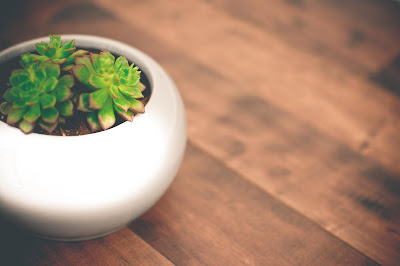Fertilizer Alternatives
Fertilizers provide a much needed boost to many indoor and outdoor plants, but most fertilizers contain harsh chemicals and are far from natural. Whether you are trying to live a more eco-friendly life, or you don't want to keep chemical fertilizers around your house for fear that kids or pets will find them, it is a good idea to look in to alternative methods of feeding your plants.
Here are a few alternatives you can try:
Coffee Grounds
Used coffee grounds contain high amounts of potassium and phosphorous, and even some nitrogen -- The main ingredients of many commercial plant fertilizers. This is a great alternative, as they are a byproduct of many households -- Even if you use a Keruig or Tassimo single-cup coffee system, just cut open the top plastic/foil of the little packet and you can easily scoop out the used grounds.
Methods:
- Collect grounds into a sealable plastic container
- If you need to store the grounds for a long period of time (like over the winter), just stick the container in the freezer.
- Fill the container with water
- Allow the grounds to soak for about a day.
- Separate the grounds from the water - Could use a coffee filter, or a fine-grain sifter.
- Use the water as a liquid fertilizer
- You can also dry out the ground and sprinkle them over the soil for an added boost.
You can also use leftover tea as plant fertilizer, but I recommend doing further research before employing this method - There are thousands of types of teas, and it's important that you don't give your plant something it cant use, and doesn't want.
Bone Meal
This byproduct from the meat industry provides a beneficial boost of calcium and phosphorous, which can be highly beneficial to some plants. Although this is not something you would come across everyday in your household, it does provide a good alternative to chemical fertilizers.
Where can I buy it?
Bone meal can be purchased online through eBay or Amazon, and is occasionally sold by some specialty gardening centers as a fertilizer (be careful buying it this way though, as it still may contain other chemicals which you might not want).
Method:
As phosphorous travels through the soil very slowly, it's best to apply bone meal when re-potting your plant so that it can be applied closer to the roots. It can also be worked in to the top of the soil to provide a prolonged food source and a method of soil enrichment.
Egg Shells
Add egg shells to soil in order to help raise the pH and add a dose of calcium to your plants -- it can even be used in place of lime to help adjust the pH when needed. This is another common by-product of many households, and can be accumulated and stored when washed correctly.
Method:
- After cracking the egg to use in cooking / baking, set the shell aside
- Very gently wash the shells in warm water - It's okay if they break, you just don't want any egg left on the shells in order to prevent spoilage
- Allow the eggs to air-dry completely
- Crush the egg shells until they become a very fine powder - Can use a food processor or blender, or even the back of a spoon to do this.
- Lightly sprinkle the powder over the soil, keeping relatively close to the base of the plant.
- Store any un-used powder in an air-tight container
Alfalfa Pellets
These are generally sold as food / treats for small animals, and will provide a small amount of potassium/phosphorous/nitrogen to the soil when treated as fertilizer.
Method:
For the best results, bury one or two pellets within the top layers of the soil - I recommend removing the remains from these pellets after a few months to prevent any chance of mold.
Warning: Some alfalfa pellets may contain seeds - Read packaging carefully.
Note: It is important to always understand the needs of the specific plant you own - Not all plants enjoy higher pH soil, or too much nitrogen. Please only choose a method based on research and understanding.
Review:
Although there are various alternatives to commercial fertilizer that can benefit your plants, they will generally not perform as well as a store-bought chemical mix. These mixes, though harmful, are specifically designed to provide the highest benefit to your plants. If you prefer to stay with a chemical mix, you can look for more natural options such as organic and "green" fertilizers which will be less harmful, but should still provide the same benefit to your plants.Note: Organic compost is another amazing fertilizer that plants love, and is possible to create at home as well. I did not go in to detail on it here, as many people who primarily focus on gardening indoors have very limited space outdoors and in general, compost is not something you want to start unless you can keep it in an area well away from your living area.
In closing, it is your decision whether or not to use a natural alternative to fertilizer chemicals, but it is always important to consider all your options and figure out what works the best for you and your plants.
Sources:
http://www.redbeacon.com/hg/fertilizer-and-pesticide-alternatives/
http://homeguides.sfgate.com/alternatives-chemical-fertilizers-46686.html







Comments
Post a Comment